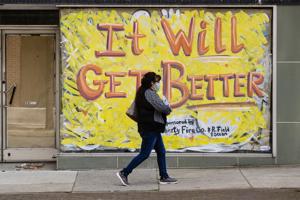Report: Pennsylvania set for $13 billion from American Rescue Plan

(The Center Square) – A report from the Tax Foundation concludes that Pennsylvania will receive more than $13 billion in aid from the next federal stimulus package.
This equals about 10,000% more than necessary to cover the state’s $67 million revenue loss, according to the foundation’s analysis. Nationally, states lost a combined $1.7 billion, representing less than one percentage point of the $350 billion in relief included in President Joe Biden’s American Rescue Plan.
Given the political divide on the vote in the U.S. Senate, which fell along party lines, it’s no surprise that Pennsylvania’s delegation to that chamber – Republican and one Democrat – see the rescue package very differently.
Republican Sen. Pat Toomey, during a call with reporters last week, scoffed at the sum of money – of which $5.7 billion will funnel to local governments – and described 2020 as “record breaking year” for revenues.
“And that does not count the $500 billion we sent them over the course of last year for all kinds of various purposes,” he said. “Now we are told they need another $350 billion. It’s ridiculous and it’s indefensible and it’s a huge chunk of money.”
Democratic Sen. Bob Casey Jr.’s office shared more details of Pennsylvania’s estimated relief allocations, on top of the $13 billion for state and local governments, to include $5.1 billion for schools; $670 million for rental assistance; and $60 million for vaccine education efforts and senior outreach.
Residents will receive $14 billion in direct payments, as well, according to Casey’s office.
“The American Rescue Plan will deliver historic relief to Pennsylvania families and workers,” Casey told The Center Square on Monday. “When President Biden signs the bill into law, that means money for schools, vaccines and people.”
Some municipalities across the state say they still face budget deficits amid unforeseen expenses of the pandemic. Pittsburgh reported a $55 million deficit for 2020 – a number that Toomey described as improbable.
“By any plausible measure, we more the offset the cost with the $500 billion went to state and local governments,” he said.
The foundation’s report calculated the amount each state will likely receive from the stimulus package based on a formula written into the bill that distributes the money based on each state’s share of national unemployed workers. Cities will receive funding based on the existing Community Development Block Grant formula and counties will see their payments divided based on population.
In Pennsylvania, more than 2.6 million residents claimed jobless benefits in 2020. The state ranked near the top of federal unemployment statistics for months as Gov. Tom Wolf’s pandemic shutdown – described as one of the most restrictive in the country – brought economic activity to screeching halt for more than 10 weeks.
Toomey said at that time national unemployment exceeded 14% and the country needed an influx of cash, and fast, to prevent an economic collapse. That’s why, he said, he supported the first five stimulus packages.
Now, with unemployment cut in half, and the economy “roaring back,” states should open and send people back to work, he said.
“Look, I get it,” he said. “There’s a lot of mayors would love to get another huge slug of cash. That’s fun to get a lot of other people’s money to spend as they see fit. But that’s not good for our budget.”
Casey praised the expansion of tax credits for families, low income workers and a $12.7 billion investment he proposed that will help seniors and individuals with disabilities stay in their homes.
“For those in long-term care facilities, money to Pennsylvania will ensure that nursing homes have the resources they need to protect residents and staff,” he said. “A lot of families across our state and the country are hurting, and the American Rescue Plan will set us on the path to recovery.”
Casey stood united with the Senate’s 49 other Democrats in approving the stimulus package over the weekend after a marathon voting session in which Republicans tried and failed to pare back the bill’s scope.
Toomey, who will retire after his term ends in 2022, called it a liberal wishlist that spike inflation and leave the country deeper in debt. He criticized the “blue state bailouts” and other handouts to causes unrelated to the pandemic, including a debt cancellation plan for minority-owned farms and ranches.
“This is not a COVID bill,” he said. “This is not a rescue plan. This is the last train leaving the station that the Democrats can plausibly pretend is about COVID or the economy and so they are loading it up with a long liberal wishlist that has nothing to do with economic recovery or combating the pandemic.”
Disclaimer: This content is distributed by The Center Square

